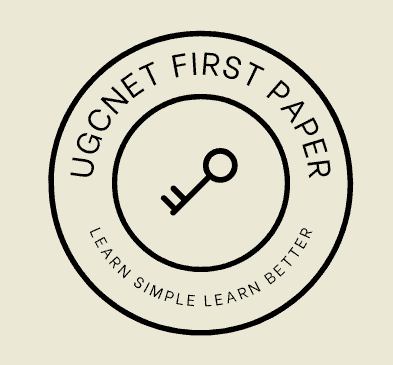अनुसंधान के तरीके: प्रायोगिक, वर्णनात्मक, ऐतिहासिक, गुणात्मक और मात्रात्मक तरीके।
(Experimental, Descriptive, Historical, Qualitative and Quantitative methods)
यहां प्रत्येक शोध पद्धति का विस्तृत विवरण दिया गया है:
1. प्रायोगिक विधि ( Experimental Method):
– परिभाषा: यह निर्धारित करने के लिए एक चर में हेरफेर करना शामिल है कि क्या एक चर में परिवर्तन के कारण दूसरे में परिवर्तन होता है। यह चरों को अलग करने के लिए नियंत्रित स्थितियों को नियोजित करता है।
– विशेषताएँ :
चरों पर नियंत्रण.
यादृच्छिकीकरण नियोजित करता है।
कारणता निर्धारित कर सकते हैं.
– उदाहरण: वास्तविक दवा बनाम प्लेसीबो प्रदान करके रोगियों पर दवा के प्रभाव का परीक्षण करना।
2. वर्णनात्मक विधि (Descriptive Method) :
– परिभाषा: किसी पहचाने गए चर को प्रभावित किए बिना उसकी वर्तमान स्थिति का वर्णन करना चाहता है।
– विशेषताएँ:
प्रकृति में अवलोकनात्मक.
इसमें हेरफेर शामिल नहीं है.
सर्वेक्षण, केस अध्ययन और अवलोकन तकनीकों का उपयोग कर सकते हैं।
– उदाहरण: किशोरों की खान-पान की आदतों पर एक सर्वेक्षण।
3. ऐतिहासिक पद्धति (Historical Method):
– परिभाषा: वर्तमान के लिए निष्कर्ष और अंतर्दृष्टि निकालने के लिए पिछली घटनाओं का अध्ययन करना शामिल है।
– विशेषताएँ:
प्राथमिक स्रोतों (पत्र, अभिलेख) और द्वितीयक स्रोतों (किताबें, लेख) का उपयोग करता है।
कालानुक्रमिक क्रम में।
उत्पत्ति और विकास की जांच करता है।
– उदाहरण: पुरातात्विक अभिलेखों के माध्यम से प्राचीन सभ्यताओं का अध्ययन।
4. गुणात्मक विधि (Qualitative Method):
– परिभाषा: अवधारणाओं, विचारों या अनुभवों को समझने के लिए गैर-संख्यात्मक डेटा एकत्र करने पर ध्यान केंद्रित करता है।
– विशेषताएँ:
किसी विषय की गहरी समझ.
साक्षात्कार, फोकस समूह, अवलोकन और पाठ्य विश्लेषण का उपयोग करता है।
परिणाम पूर्वानुमानित के बजाय वर्णनात्मक होते हैं।
– उदाहरण: नए चिकित्सा उपचार के साथ उनके अनुभवों के बारे में रोगियों का साक्षात्कार लेना।
5. मात्रात्मक विधि (Quantitative Method) :
– परिभाषा: संख्यात्मक डेटा एकत्र करने और उसका विश्लेषण करने के लिए सांख्यिकीय तरीकों का उपयोग करने पर ध्यान केंद्रित करता है।
– विशेषताएँ:
संरचित डेटा संग्रह उपकरण (सर्वेक्षण, प्रश्नावली) नियोजित करता है।
परिणामों को सामान्यीकृत किया जा सकता है.
परिकल्पनाओं का परीक्षण करने के लिए उपयोग किया जाता है।
– उदाहरण: एक सर्वेक्षण जो इस बात पर डेटा एकत्र करता है कि छात्र प्रति सप्ताह कितने घंटे पढ़ते हैं और इसे उनके ग्रेड के साथ सहसंबंधित करते हैं।
2.2-Methods of Research
: Experimental, Descriptive, Historical, Qualitative and Quantitative methods.
Here’s a detailed breakdown of each of the research methods:
1. Experimental Method:
– Definition: Involves manipulating one variable to determine if changes in one variable cause changes in another. It employs controlled conditions to isolate variables.
– Characteristics:
Control over variables.
Employs randomization.
Can determine causality.
– Examples: Testing the effect of a drug on patients by providing them with a placebo vs. the actual drug.
2. Descriptive Method:
– Definition: Seeks to describe the current state of an identified variable without influencing it.
– Characteristics:
Observational in nature.
Does not involve manipulation.
Can use surveys, case studies, and observational techniques.
– Examples: A survey on the eating habits of teenagers.
3. Historical Method:
– Definition: Involves studying past events to draw conclusions and insights for the present.
– Characteristics:
Uses primary sources (letters, records) and secondary sources (books, articles).
Chronological order.
Investigates origins and evolution.
– Examples: Studying ancient civilizations through archaeological records.
4. Qualitative Method:
– Definition: Focuses on gathering non-numerical data to understand concepts, opinions, or experiences.
– Characteristics:
Deep understanding of a subject.
Uses interviews, focus groups, observation, and textual analysis.
Results are descriptive rather than predictive.
– Examples: Interviewing patients about their experiences with a new medical treatment.
5. Quantitative Method:
– Definition: Focuses on gathering numerical data and using statistical methods to analyze it.
– Characteristics:
Employs structured data collection instruments (surveys, questionnaires).
Results can be generalized.
Used to test hypotheses.
– Examples: A survey collecting data on how many hours students study per week and correlating it with their grades.
